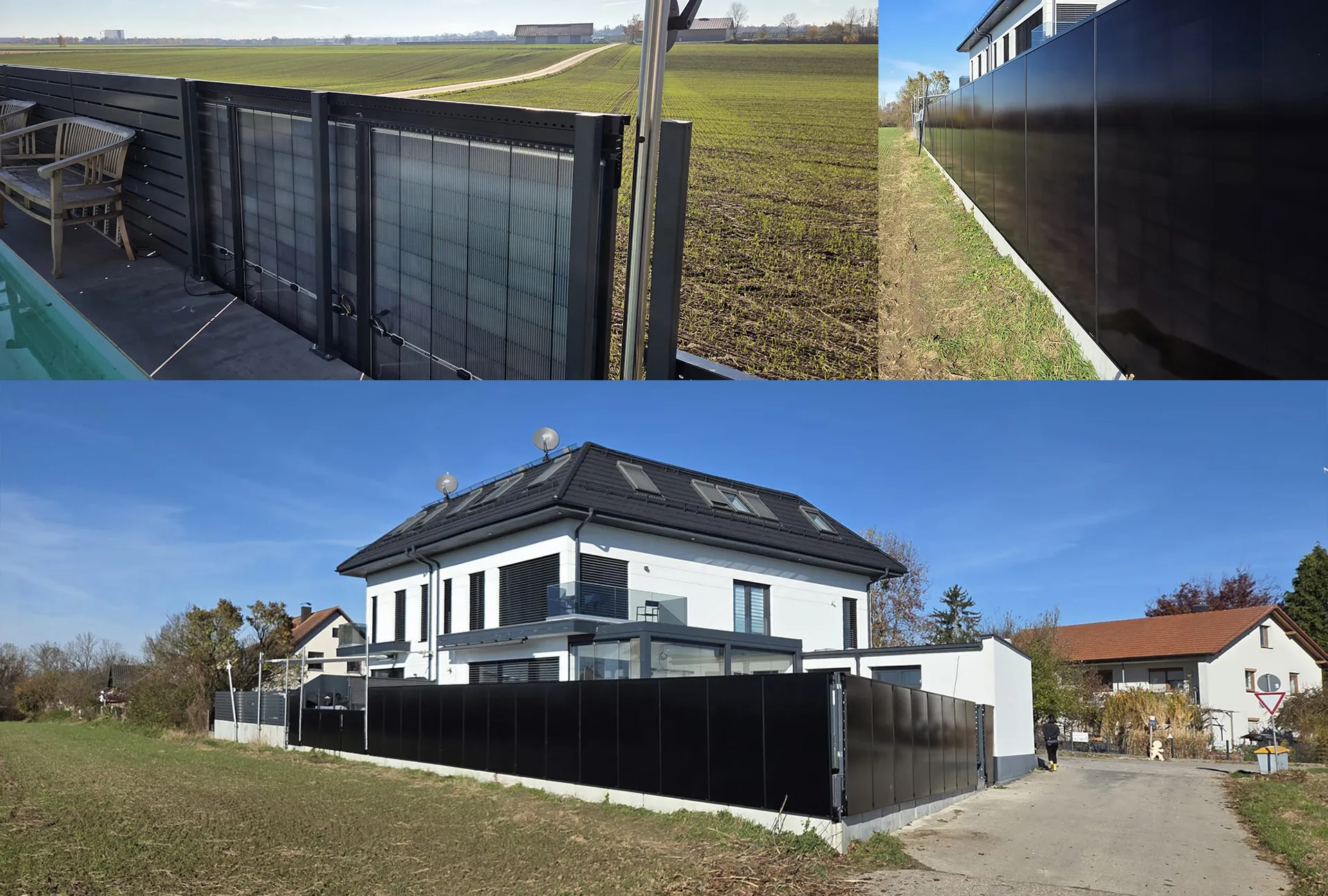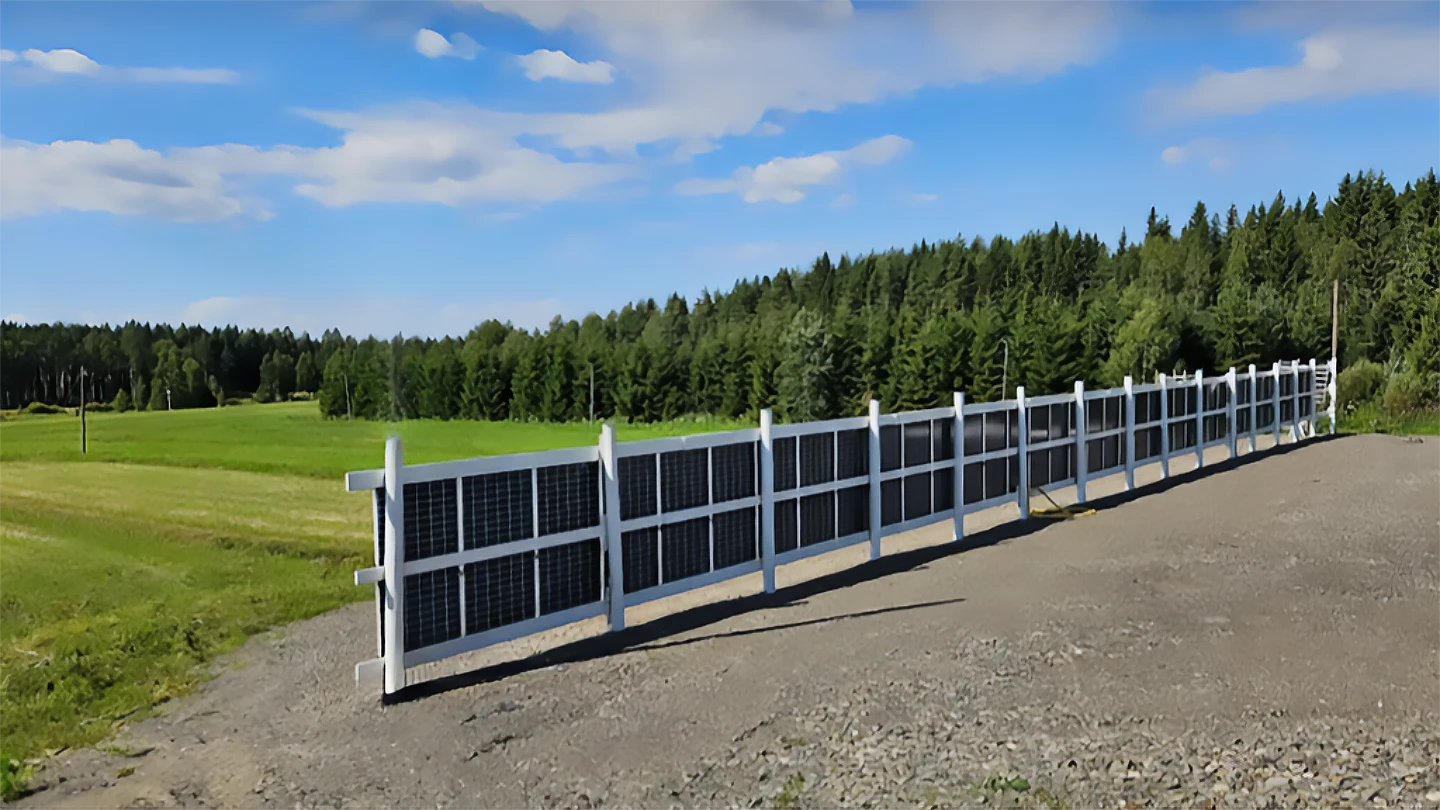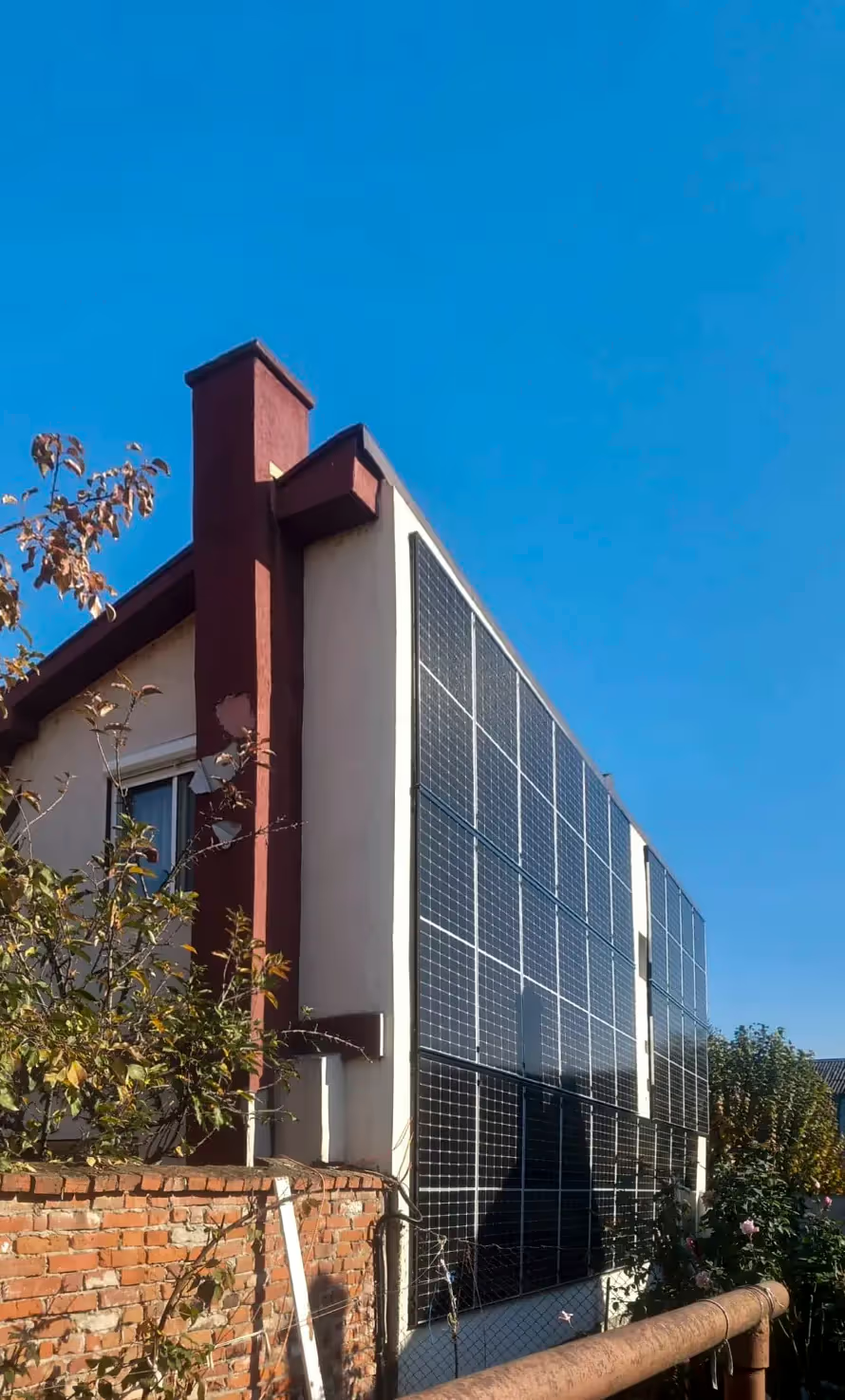RAULI FENCE – Building a fence from solar panels
We all know solar panels from many places – on house roofs, on the walls of shopping centers, and in large open fields as part of solar parks.
Now, a new and very interesting way to use solar panels is becoming popular: as a fence.
Using solar panels as a fence has the same energy benefits as wall installation. Snow does not collect on the panels, and low sunlight from mornings and evenings can be used efficiently. In addition, a solar panel fence simply looks better than a normal fence – or do you disagree?
During the past year, we have been involved in many fence projects. RAULI elements are very suitable for building fences:
Many fixing points make it possible to attach the elements to almost any support structure. The Easy Slide installation system lets panels “float” between the elements. After lifting them in place, you can slide the panel to the exact position like a sliding door.
RAULI elements are made of steel, so they can be painted in any color. Even the most ambitious projects can be done with our products. Thanks to the high-quality material, the system is strong and long-lasting. A fence made with RAULI elements will last for decades.
DIFFERENT PROJECTS
We have participated in several different types of projects. Here we show three examples:
A stylish open-back fence for a private home an open-back fence at the edge of a field and a solid concrete wall covered with panels.
We also explain how each project was technically built.

GERMANY
Our most stylish fence project so far is located in Germany. A modern home wanted an elegant solar panel fence. It was clear that the fence should be completely black, so black-painted RAULI elements were the perfect choice. Combined with black solar panels, the final result is truly stunning.
Both the RAULI elements and the main structure were made of high-strength steel to ensure durability. The fence was built on top of a concrete base, leaving the backside open. After electrical work was finished, the back side was covered with dark wood, making the fence look beautiful from every angle.
This kind of design fits perfectly in places where style and sustainability are both valued.

FINLAND
In Finland, we designed an impressive fence along the edge of an open field. The goal was an open-back structure so the panels could also use sunlight coming from behind.Because the space was limited in width, we used taller solar panels to get more power from a smaller footprint.
The panels had to be lifted off the ground so that winter snow would not cover them, ensuring good electricity production even in dark and cold months.The large panel size and height created wind load challenges, so the structure had to be strong. Big wooden posts were used as supports, and the RAULI elements were easily attached to them.
A cross support was added behind the panels for extra stability, preventing strong wind gusts from bending the panels. This structure can also be used in large solar parks to build “solar fences” between or around ground-mounted panel rows.

ROMANIA
In Romania, we worked on a more traditional fence project. A solid wall surrounding a residential property was covered with solar panels.
We have long experience with RAULI WALL systems on concrete surfaces, so the best fixing method was easy to choose.
Whatever the wall material, we can find the right attachment.
The panel size and layout were designed based on the fence’s real measurements. With two horizontal rows of panels, we covered most of the wall surface. The result looks impressive, and the property now stands out beautifully from the neighborhood.
The same type of structure can also be used for large-scale fences, for example, on noise barriers along motorways.

YOUR PROJECT
What kind of fence project do you have in mind? Whatever the idea, we probably have the right solution.
Contact us — let’s design it together.



